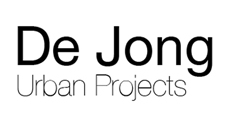New SubUrbanisms
Available from Routledge at: https://www.routledge.com/products/9780415642170
During the suburban explosion of the mid-20th century, the typical American city and its suburbs seemed to reflect distinctly different cultural, demographic, and spatial conditions. The central city was conventionally portrayed as the old, dying locus of high culture and employment, demographic diversity, density, and verticality, while peripheral areas were stereotyped as new, growing residential enclaves of mass culture (ergo, cultural vacuity), homogeneity, dispersion, and horizontality. This polarization has proven stubbornly resistant to revision.
Meanwhile–quietly, stealthily–there has been an ongoing “flattening” of the American metropolis, as many suburbs are becoming more similar to their central cities, and cities more similar to their suburbs. Such flattening is both effect and cause; driven by substantial demographic and cultural change and evidenced by new spatial and formal practices, flattening also makes architectural and urban innovation possible. These novel practices, seen most vividly in urbanizing suburbs and suburbanizing urban cores, are exemplified in the emergence of hybrid suburban/urban—sub/urban, for short—conditions: interstitial parking, the residential densification of suburbia, inner-city big-box retail, and hyper-programmed public spaces, among others. Each of these new sub/urbanisms reflects, to varying degrees, the reciprocating influences of the urban and the suburban. At the same time, these hybrid practices combine and re-configure conventional understandings of these familiar terms. In so doing, each offers opportunities for design innovation and the development of new ways of forming the evolving American metropolis.






Leave a Reply
You must be logged in to post a comment.